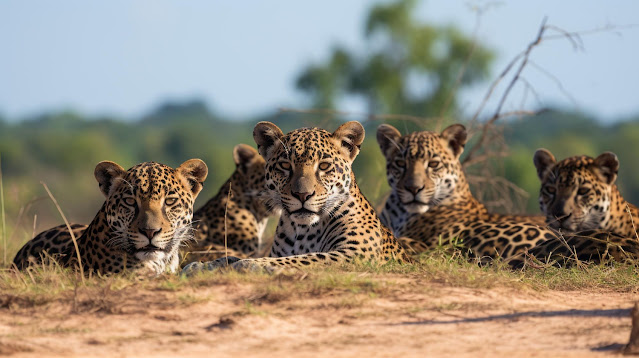Everything you should know about the great migration in Africa
With 1.3 million wildebeest, two hundred thousand zebras, and up to five hundred thousand gazelles, the ‘great’ of the Great Migration is an understatement. It is an 800 km-long journey that covers two countries and is carried out by some of the largest terrestrial animal herds on the planet. Today, we are going to tell you everything you need to know about the Great Migration.
Let us take a brisk walk through the annual migration cycle-
This extraordinary migration takes place in what is called the Serengeti ecosystem, which spans across Tanzania and Kenya. The animals move in a northeastern direction from Serengeti National Park in Tanzania to Masai Mara National Park in Kenya.
Here is a look at the timeline of the migration.
- December to March -
This is the time of heavy rains in Tanzania and the showers are at their heaviest in the beginning of the year. The Serengeti is filled with female wildebeests who are getting ready to give birth after a feast of nutritious grass. The birthing season begins in mid-February and continues through March, adding half a million newborns in a month. It is an incredible spectacle to witness but prepare for some violence too, as the predators are always close by.
- April to mid-June -
As the rains come to an end in the southern Serengeti, the grasses start to dry and shrivel. The herd then begins to move north in search of fresh grass. In this period, you might spot huge 40 km-long herds stretching through the centre of Serengeti National Park. This is also the action-packed breeding season in which males compete fiercely for mates. By the end of June, the herds begin to gather on the western corridor of the Serengeti.
- Mid-June - November-
The Mara River Crossing, which is often said to be the star of this natural wonder, lies here.
As the dry season progresses, the herds continue their northward movement, reaching the Maasai Mara in Kenya. These are the months of exhilaration, excitement, chaos and commotion. Watching the great wildebeests plunge across the water is undoubtedly some of the most exciting game viewing you will ever experience. About two hundred and fifty thousand wildebeests die every year during the crossing. In June, the herds begin to gather in the plains of northern Serengeti and the action gets going at the beginning of July.
- October - December -
By October, the wildebeests start their journey back to the Serengeti. This means a second crossing of the Mara River. But nature is cyclical so as November rolls, the thunderclouds and southern Serengeti are lush again, ready for the cycle to begin all over once again.
If you want to get a hold of this spectacle of Mother Nature, it’s vital to book your Wildebeest Migration Safari in Africa in advance. It is recommended to choose a mobile safari camp that moves with the migration. We would recommend getting in touch with professional trip organisers like Jokotta Discoveries, who work with a group of naturalists to provide you with the best value for your precious time. They offer customised itineraries as well to give you the freedom to pick a season you wish to relish. Visit Jokotta Discoveries for a customised itinerary.




Comments
Post a Comment